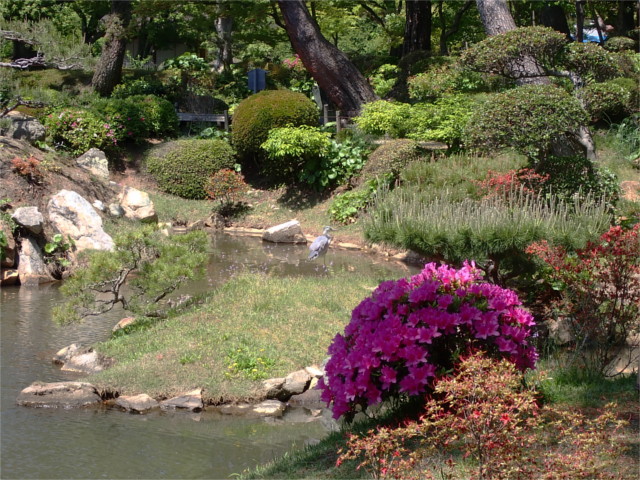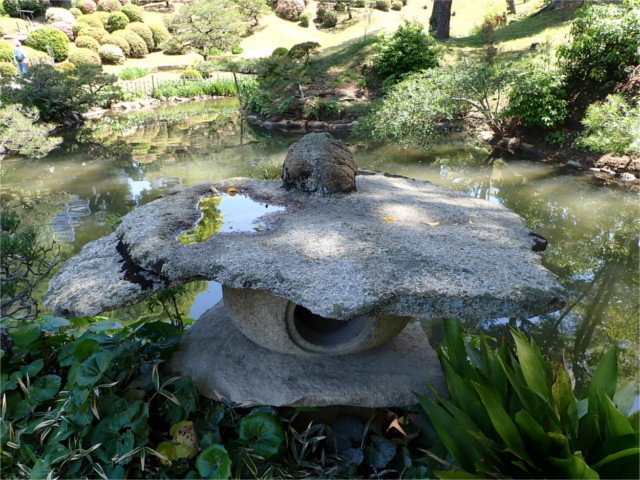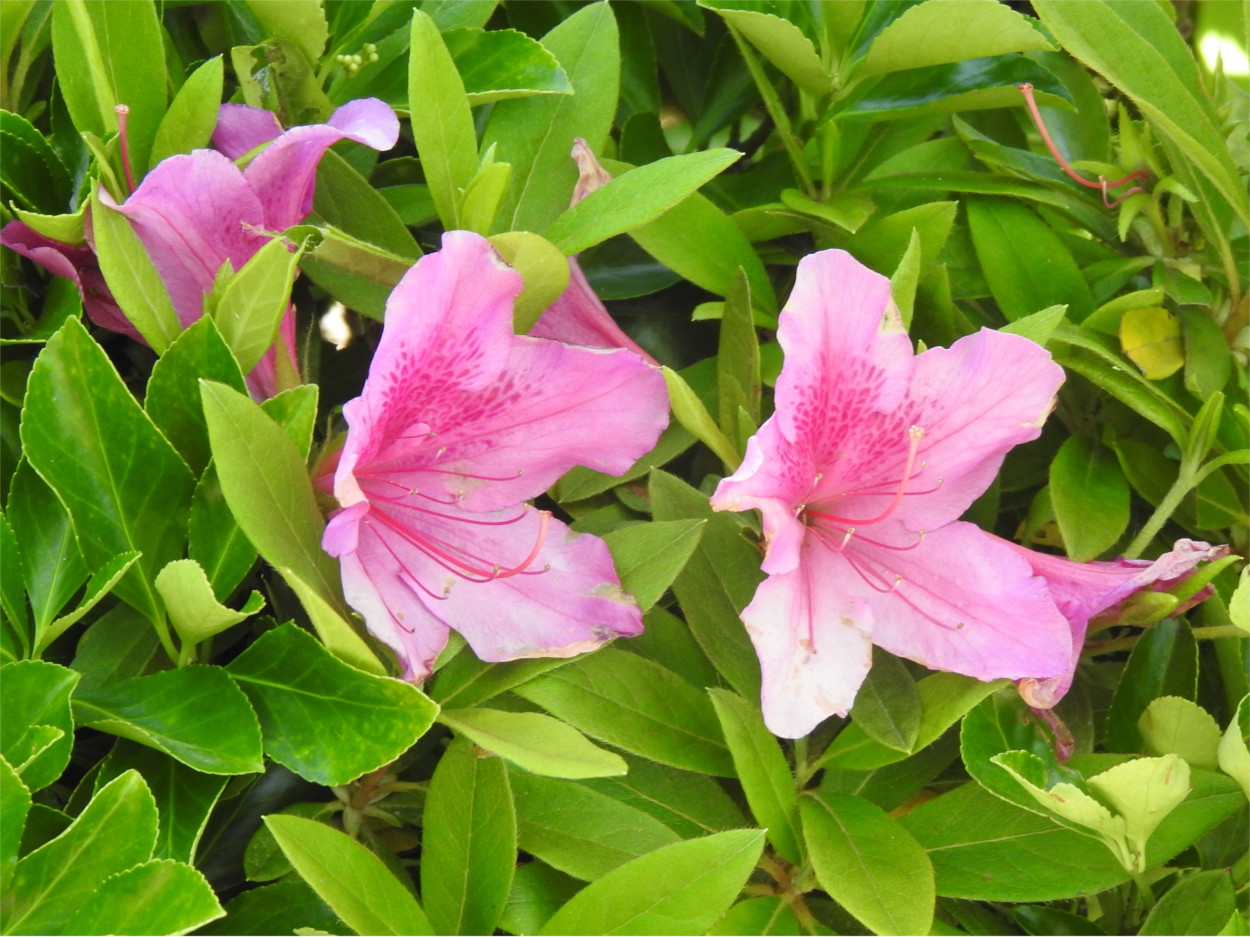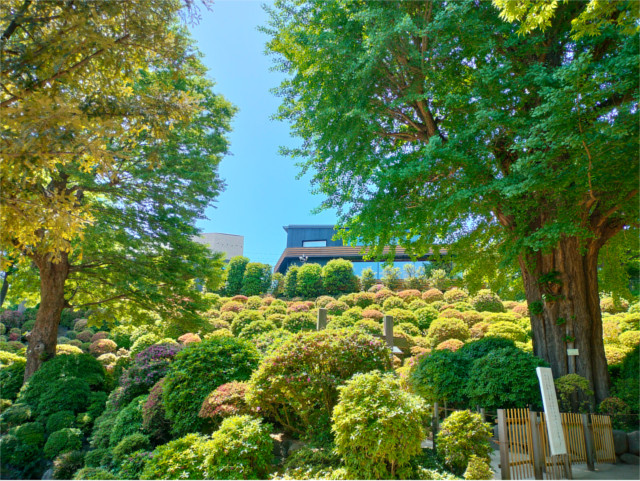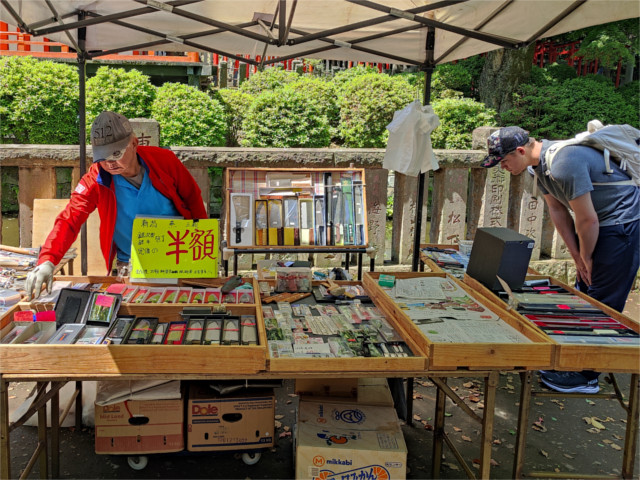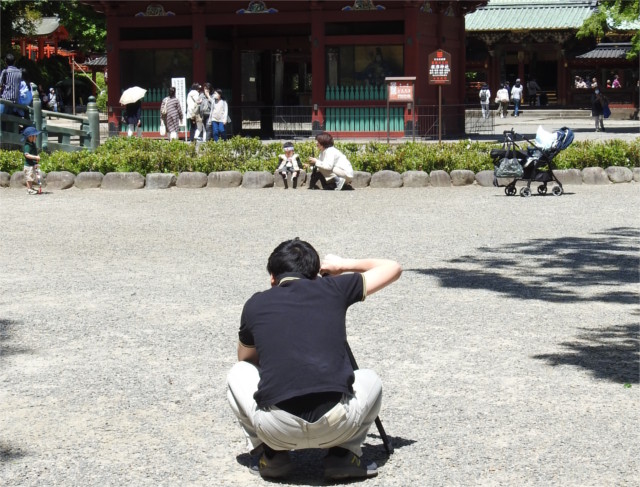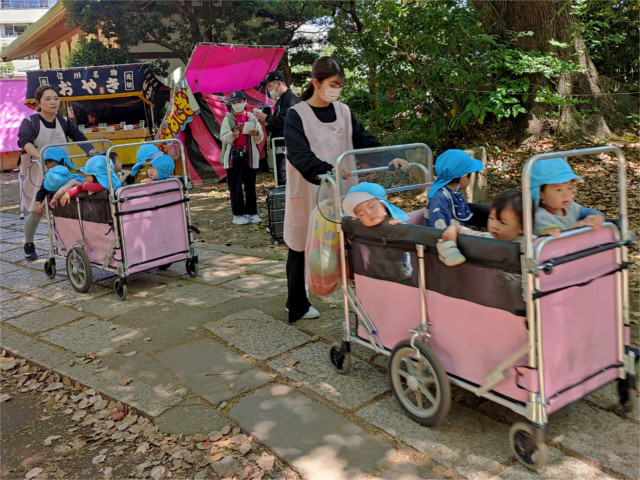Ueda Soko was a Samurai warlord who became a tea master after the age of seventy, and designed the beautiful strolling garden called Shukkeien in Hiroshima in 1620 CE for his daimyo, Asano Nagaakira. It is a small garden with a pond in the middle and a path that winds around it. We took the path and followed its full circuit. Every strolling garden takes you from one view point, where you stop to admire the view, to another.
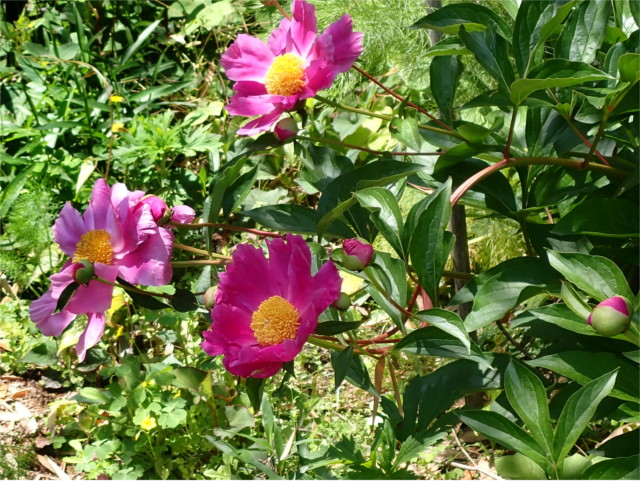
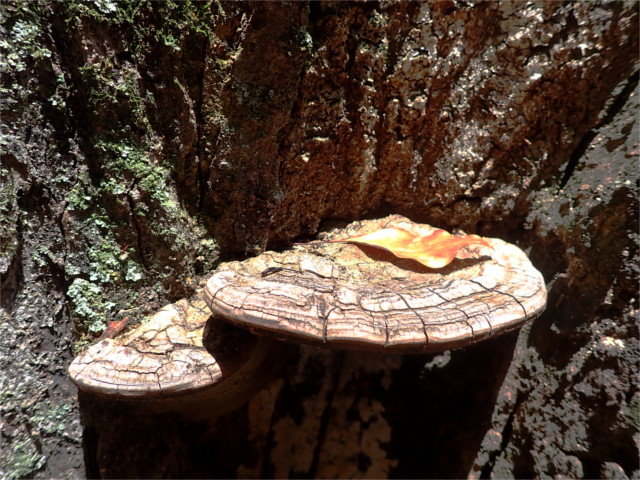
We passed a twisted Japanese red pine (Pinus densiflora, the featured photo), wandered through a stand of bamboos, strolled through a herb garden (the flowers above are of the medicinal plant Mongolian milkvetch, Astragalus mongholicus), and stopped at a massive tree trunk with aged woody bracket fungi growing from it. There was a wooden image of Buddha, one of three recovered from the Kyobashi river in a long-ago flood, which did not go up in flames in the atomic bombing.
The central pond, the Takuei pond, is said to be inspired by Hanzhou’s extensive West Lake. The artful climbs and dips, the miniature waterfall which feeds the lake, and the islands in the middle of the pond (heron island, and turtle island) are said to be the miniature landscapes, shukkeien in Japanese, which give the garden its name. We stopped to admire the azaleas in bloom on the well-trimmed bushes. Beyond it a gray heron (Ardea cinerea) was intently staring into the water, looking for fish.
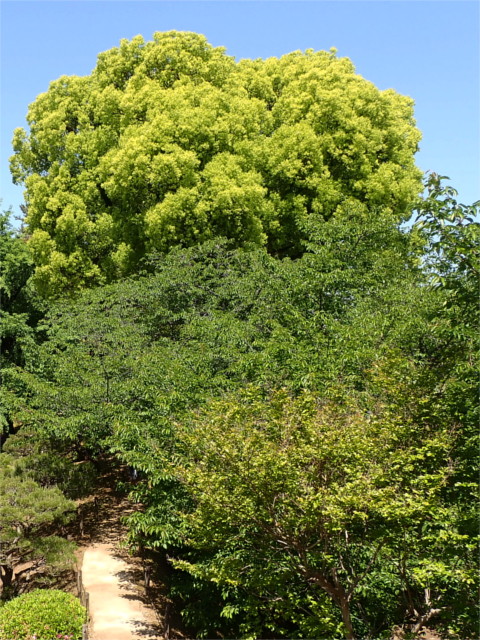
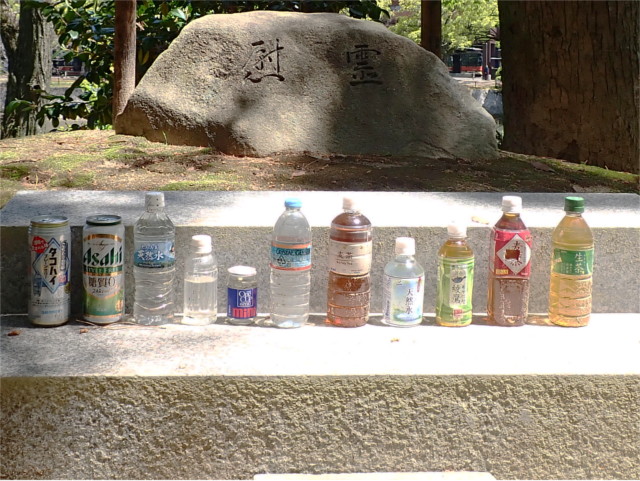
The garden is a short walk from the ground zero of the atomic bombing, and had caught fire in the blast. Survivors came here in search of water and shelter. Of the trees that survived, the tall gingko in the background of the photo above has become a symbol of regeneration. The survivors of the bombing left a few memorials here. The stone that you see above is a memorial to dead children. Looking at it I realized that those dead children might have been in their 80s by now, and the people who placed the offerings there could well have been the contemporaries of their grandchildren, if they had lived.
Gardens are meant as places where you relax, and let your mind wander in directions that they might not otherwise take. They are a place for reflection. In that sense, gardens are perfect spiritual places.

